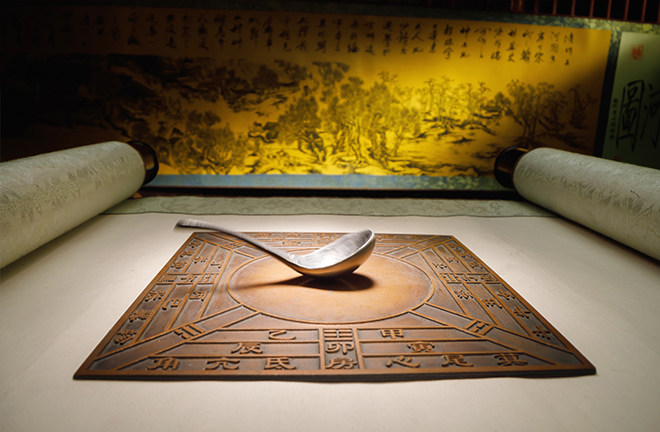Turkish scholar examines Chinese civilization’s prominent features

A sinan compass invented during the Warring States Period, evidencing Chinese civilization’s innovativeness Photo: TUCHONG
June 2 marked the first anniversary of General Secretary of the CPC Central Committee Xi Jinping’s important speech at a seminar on cultural inheritance and development, where he emphasized the five prominent features of Chinese civilization: continuity, innovativeness, unity, inclusivity, and peaceful nature. To present an international perspective on Xi’s theory regarding Chinese civilization, CSST recently interviewed Giray Fidan, a professor of Chinese language and history at Ankara Haci Bayram Veli University in Türkiye.
Fidan told CSST that continuity is a fundamental aspect of Chinese culture, setting it apart as a distinctive entity among global civilizations. “Throughout history, many civilizations have disappeared or transformed drastically, but Chinese civilization stands out for its enduring cultural continuity. This characteristic of continuity, deeply ingrained in China’s cultural fabric, presents a captivating narrative of its historical development and ability to endure.”
From its early stages to the complex dynastic eras that followed, Chinese civilization has undergone significant changes, including political turmoil, dynastic transitions, and profound philosophical shifts, Fidan continued. In comparison to ancient societies such as those found in Mesopotamia, Egypt, or the Indus Valley, which either disappeared or were assimilated by subsequent cultures, Chinese civilization not only endured these obstacles but also upheld a noteworthy degree of persistence in terms of linguistic and organizational frameworks.
The preservation of classical Chinese language, particularly its persistence into the early 20th century, has been crucial in ensuring continuity. Classical Chinese served as the language of governance, intellect, and literature, connecting different eras and facilitating a shared cultural and intellectual legacy passed down through generations. The vast geographical and demographic scale of Chinese civilization has also played a role in its longevity, allowing cultural traditions to be upheld and transmitted widely, even in the face of external threats and internal conflicts, Fidan explained.
He summarized that despite various transformations over time, Chinese civilization’s unparalleled continuity distinguishes it from ancient civilizations. “This enduring continuity is not a static tradition but a dynamic process of adaptation and preservation. It can be contended that the aspect of continuity in Chinese civilization surpasses that of any other civilization in history, showcasing the resilience and adaptability of cultural expressions,” Fidan added.
With respect to Chinese civilization’s remarkable unity, Fidan elaborated that it is coined in the Confucian classic The Analects, which introduces the concept of “unity in diversity.” “This aphorism encapsulates a critical dimension of Chinese civilization—its capacity to maintain cohesion amidst considerable cultural plurality. This guiding principle suggests that true harmony in society is achieved not through uniformity, but through the respectful integration of diverse elements.”
Chinese civilization, characterized by its vast geographical expanse and demographic diversity, serves as a vivid illustration of this precept, Fidan said. It hosts many languages, dialects, and cultural practices, yet it is bound by a common thread of shared values and historical continuity. The interplay between unity and diversity in China is not merely a theoretical ideal but a lived reality that has shaped its development.
“Innovativeness stands as a pivotal characteristic of Chinese civilization, manifesting across its long historical continuum,” Fidan remarked. Throughout the course of history, China has played a pivotal role in advancing global technology and intellectual development, as evidenced by its celebrated four major innovations in paper production, navigation tools, explosive materials, and printing techniques. These innovations not only revolutionized activities within China but also had far-reaching impacts on the rest of the world, fundamentally altering the course of global history.
Beyond these well-celebrated inventions, the spirit of innovation in Chinese civilization is evident in various other sectors throughout its history. For instance, in the realm of agriculture, Chinese ingenuity led to the early development of sophisticated irrigation and fish farming techniques, which significantly boosted productivity and sustainability. Similarly, in the field of medicine, ancient Chinese practitioners devised complex theories of health and disease, which continue to be integral to alternative medicine worldwide today, Fidan illustrated.
Furthermore, Fidan noted that since ancient times, Chinese philosophical traditions have distinctly emphasized the value of peace, a principle deeply embedded even within the canonical texts such as The Art of War. Despite its apparent focus on military strategies, a closer examination of The Art of War reveals a nuanced advocacy for “winning without fighting.”
“This classical work, often misconstrued as merely a treatise on warfare, fundamentally underscores the strategic preference for resolving conflicts through non-violent means,” Fidan said. This approach is emblematic of a broader Chinese ethos that prioritizes harmony and strategic foresight over direct confrontation.
The enduring influence of such texts highlights the profound role of peace as a cornerstone within Chinese thought. Throughout history, this philosophy has not only shaped military tactics but also informed broader societal values and governance practices, illustrating the deep-rooted commitment to peace in Chinese culture, Fidan said.
Edited by CHEN MIRONG
